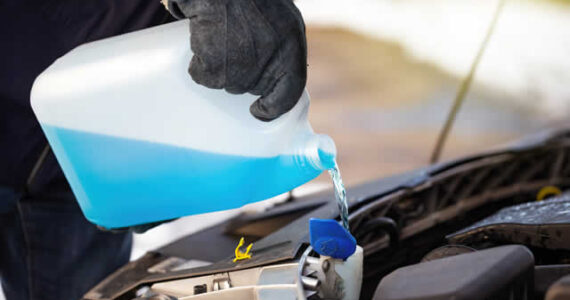Auto coolant, commonly known as antifreeze, is a vital fluid for your vehicle’s optimal functioning. It’s a mixture of distilled water and a specially formulated coolant, which maintains the engine’s temperature within the desired limits, preventing overheating in hot weather and freezing in the cold.
The coolant circulates through the engine, absorbing heat and transferring it to the radiator, where it cools down before making another round. This cycle is crucial in maintaining the engine’s temperature, preventing damage from thermal expansion and contraction, and keeping your vehicle running smoothly.
Checking Your Coolant Level
Regularly checking your coolant level is essential to maintain your engine’s health and prevent overheating. Here’s how to check the coolant level in your vehicle:
- Ensure the Engine is Cold: Never check the coolant level when the engine is hot, as the coolant system is pressurized and can cause injury.
- Locate the Coolant Reservoir: Look for a transparent reservoir with a marking for maximum and minimum coolant levels.
- Check the Level: The coolant should be between the maximum and minimum markings. If it’s below the minimum mark, you’ll need to add more coolant.
Adding Coolant to Your Vehicle
If your coolant level is low, you should add more to reach the desired level. Here’s how to do it:
- Buy the Right Coolant: Ensure you buy the right type of coolant for your vehicle. Check your vehicle’s manual if you’re unsure.
- Open the Coolant Reservoir Cap: Ensure the engine is cold. Slowly twist the cap off, being careful to avoid any hot steam.
- Add the Coolant: Slowly pour the coolant into the reservoir until it reaches the maximum line. Replace the cap securely.
Changing Your Coolant
Over time, the coolant can degrade and become less effective, necessitating a change. Here’s how to change your coolant:
- Allow the Engine to Cool: Like before, only work on a cold engine to avoid any risk of burns.
- Drain the Old Coolant: Position a drain pan beneath the radiator drain plug and then open the plug. Allow the coolant to drain fully.
- Flush the System: With the drain plug open, pour distilled water into the radiator to flush out any residual coolant.
- Refill with Coolant: Close the drain plug and refill the system with new coolant.
By understanding the purpose of auto coolant, and knowing how to check, add, and change your coolant, you can keep your vehicle running smoothly and efficiently. Regular coolant maintenance can save significant repair expenses and extend the lifespan of your car’s engine.
Failing to check the coolant in your vehicle regularly can lead to a host of problems. If the coolant level drops too low, it can cause your engine to overheat, leading to potential head gasket failure, warping of the engine block, or even complete engine failure.
These repairs can be exceedingly costly and time-consuming. Furthermore, old or degraded coolant may not perform optimally, thereby reducing the efficiency of your vehicle’s cooling system. Regular inspections of the coolant level and its condition are essential to maintaining the longevity and health of your vehicle’s engine.
image credit: envato.com














